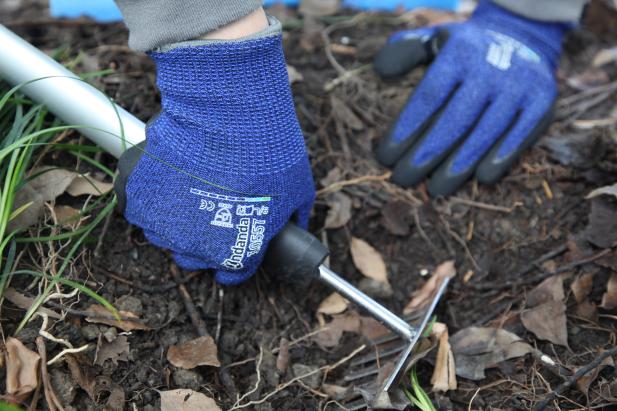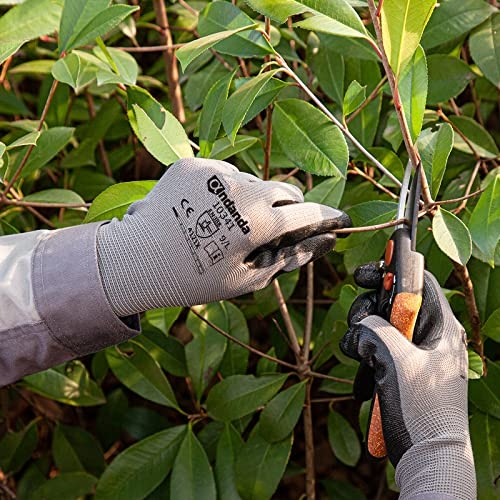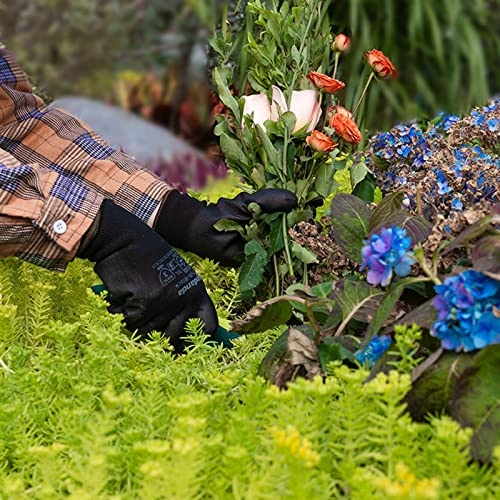Garden Gloves: Nurturing Your Garden, Shielding Your Hands
A trusty pair of garden gloves stands as an indispensable tool for every gardener, safeguarding your hands from the perils of cuts, scratches, and scrapes as you toil away in your yard.
These garden gloves serve as a protective shield against the likes of dirt, thorns, and splinters, but their value extends beyond mere protection. During the frigid winter months when the ground may turn icy, they offer warmth, ensuring your hands remain comfortable and shielded from the cold. Gardeners frequently don them when wielding tools such as shovels and rakes, granting the peace of mind that blisters and calluses won’t plague their hands during extended use of these implements.

In essence, garden gloves are an indispensable asset for gardeners and landscapers alike. They not only shield your hands from blisters and cuts but also help avert rashes and skin irritations. Additionally, they provide a protective barrier against the unforgiving sun’s rays. Moreover, they enhance your ability to maintain a firm grip on tools and various objects essential for your gardening endeavors.
The Unique Demands of Gardening
Physical Demands of Gardening
Gardening stands as a distinctive and physically demanding pursuit, one that calls for not just enthusiasm but also physical strength, stamina, and endurance. Often, we overlook the robust physicality inherent to gardening until we encounter the challenge of heaving a weighty bag of soil or attempting to hand-Pune a towering tree that surpasses our reach.
Exposure to Soil and the Elements
Gardening places you squarely in the embrace of the elements, necessitating that you equip yourself with adequate protection against wind, rain, sleet, or snow before embarking on your garden endeavors. Moreover, this exposure may extend to encounters with insects and other potential pests. Managing such issues can be achieved through the use of organic remedies, including diatomaceous earth or homemade solutions such as garlic spray, ensuring your garden thrives while keeping unwanted intruders at bay.
Key Features of High-Quality Garden Gloves
1. Material and Craftsmanship
Garden gloves, a protective handwear essential for gardening, come in various forms, often referred to as garden or horticultural gloves. These gloves are fashioned from a range of materials, including leather, vinyl, and nylon, either as standalone materials or in combinations. Exceptional garden gloves should provide a barrier shielding your hands from dirt and plant matter, all the while preserving tactile sensitivity, allowing you to work with precision and efficiency.
2. Fit and Comfort
A superior pair of garden gloves should offer a snug and well-suited fit for your hand. They ought to strike the delicate balance between not being overly tight or excessively loose but just right for your comfort.
Additionally, the choice of glove material should contribute to overall comfort. If you experience blisters or discomfort on your hands after use, it might indicate that the gloves are not the perfect match for your needs. Seek out gloves that boast breathability and flexibility, enabling you to carry out tasks without causing discomfort.
3. Grip and Protection
Quality garden gloves are versatile, catering to a multitude of tasks and scenarios. They excel in providing both protection and grip, regardless of whether you’re working in wet or dry conditions. When handling tools such as shovels or trowels, it’s paramount that the gloves shield your hands against blisters and cuts while simultaneously affording you a firm, secure grip on the tools in question.
4. Durability
Given the demanding nature of yard and garden work, garden gloves must be built to withstand considerable wear and tear. Prioritize gloves constructed from high-quality materials like leather or robust canvas cloth, as they are more likely to endure the rigors of outdoor work over time, far outlasting those fashioned from synthetic materials such as nylon or polyester.

Selecting the Perfect Garden Gloves
Assessing Your Gardening Requirements
The choice of garden gloves is inherently linked to the nature of the work at hand and the degree of protection required. Consider the following factors when determining the ideal glove for your needs:
Work Type: For tasks like basic digging in soil, simple leather or fabric gardening gloves suffice. However, when dealing with pruning trees or bushes, opt for leather gloves featuring plastic mesh backs to safeguard your hands against thorns and branches.
Chemical Exposure: If you’re handling chemicals such as pesticides or herbicides, prioritize chemical-resistant gloves clearly labeled as such. Gloves crafted from latex or nitrile rubber offer an additional layer of protection, although they may feel less comfortable in hot weather compared to other materials.
Size and Fit
The appropriate size hinges on your personal preferences and specific requirements. Some individuals favor added space in certain areas, allowing for freer finger movement, while others prefer a snug fit that restricts movement. If you belong to the latter group, seek out smaller sizes with less finger and palm flexibility.
By thoughtfully assessing your gardening needs and taking sizing and fit into account, you can ensure that your chosen gloves align perfectly with the demands of your gardening tasks.

Applications and Advantages of Gardening Gloves
General Gardening
For those embarking on their gardening journey or managing a variety of plants that don’t require specialized care, basic garden gloves prove sufficient for most tasks. Typically crafted from natural fibers like cotton, these gloves feature durable leather palms and fingertips. This combination ensures protection against thorns and other sharp objects commonly found in garden beds or pots.
Pruning and Trimming
Pruning and trimming are among the most common applications for gardening gloves, offering the following advantages:
1) Protection Against Cuts: These gloves act as a safeguard against cuts caused by sharp branches and thorns.
2) Thorn Shield: When pruning thorny bushes, they prevent thorns from piercing the skin as you trim them back from their stems using secateurs or loppers.
3) Splinter Shield: While cutting branches with shears or other tools that necessitate gloves, they shield your hands from splinters that could result from handling these tools (e.g., hedge trimmers).
Specialty Gardening
Certain plants, such as roses, require specialized care encompassing soil preparation, fertilization, pruning, digging, mulching, and watering. When caring for delicate plants like roses, the right pair of gloves becomes indispensable. These gloves enable you to tend to roses without damaging their fragile stems or leaves, preserving the beauty of these flowers.
CONCLUSION
In the realm of gardening, where the tender care of the earth and coaxing life from the soil is a labor of love, garden gloves emerge as indispensable companions. These gloves transcend their role as mere garden attire; they epitomize the delicate equilibrium between tending to the splendor of nature and safeguarding our most invaluable tools—our hands.
Garden gloves, in their diverse forms and applications, transcend the status of mere accessories; they stand as a testament to our collective dedication to gardening with meticulous care and unwavering consideration. They serve as a perpetual reminder that, as we immerse our hands into the soil and connect with the earth, we do so with the utmost respect for the environment and a steadfast commitment to the protection of our hands.
In summary, garden gloves are not a luxury but a necessity. They serve as the conduit between the gardener and the garden, ensuring that every touch is gentle and every interaction is nurturing. As we continue to cultivate our gardens, let us bear in mind that garden gloves are our trusted allies, allowing us to nurture the earth while safeguarding our hands, thus fostering a flourishing and harmonious garden.

